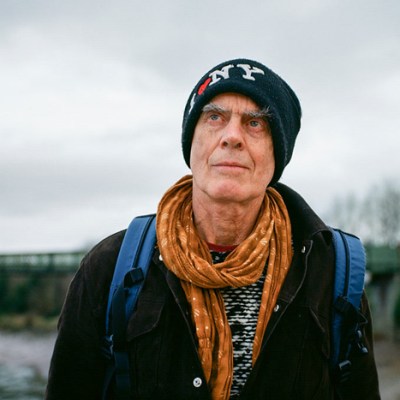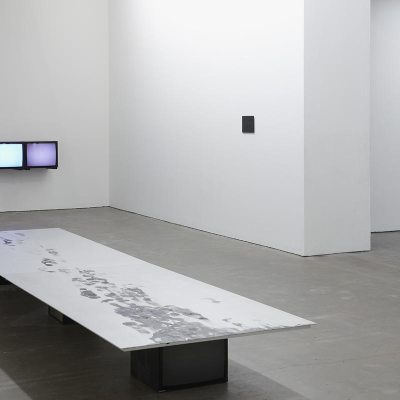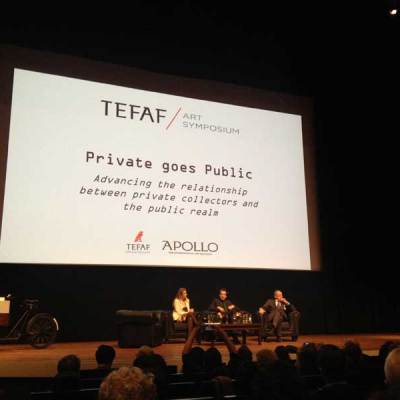I used to be an invigilator and I’d often have to tell people off for touching the art. Each time the person retorted ‘I was only looking!’ I would want to respond, ‘I don’t see any eyeballs at the end of your finger tips’ but refrained through fear of losing my job. Of course, it is a natural desire to want to translate aesthetic sensations into haptic ones. If anybody had eyeballs in their hands it was Raoul De Keyser, who spent 40 years translating visual experience into the material language of paint. He took the things around him and transformed them into witty and deceptively simple paintings. The lines on a football pitch, the tree outside his studio window, a walking stick: De Keyser eroded the hermeticism of formalist abstraction, creating his own painterly language which was grounded in the everyday.
Exhibition View, ‘Raoul De Keyser: Paintings 1967 to 2012’, at Inverleith House, Royal Botanic Garden Edinburgh. Courtesy of private collection, Zeno X Gallery, Antwerp, and David Zwirner, New York/London.
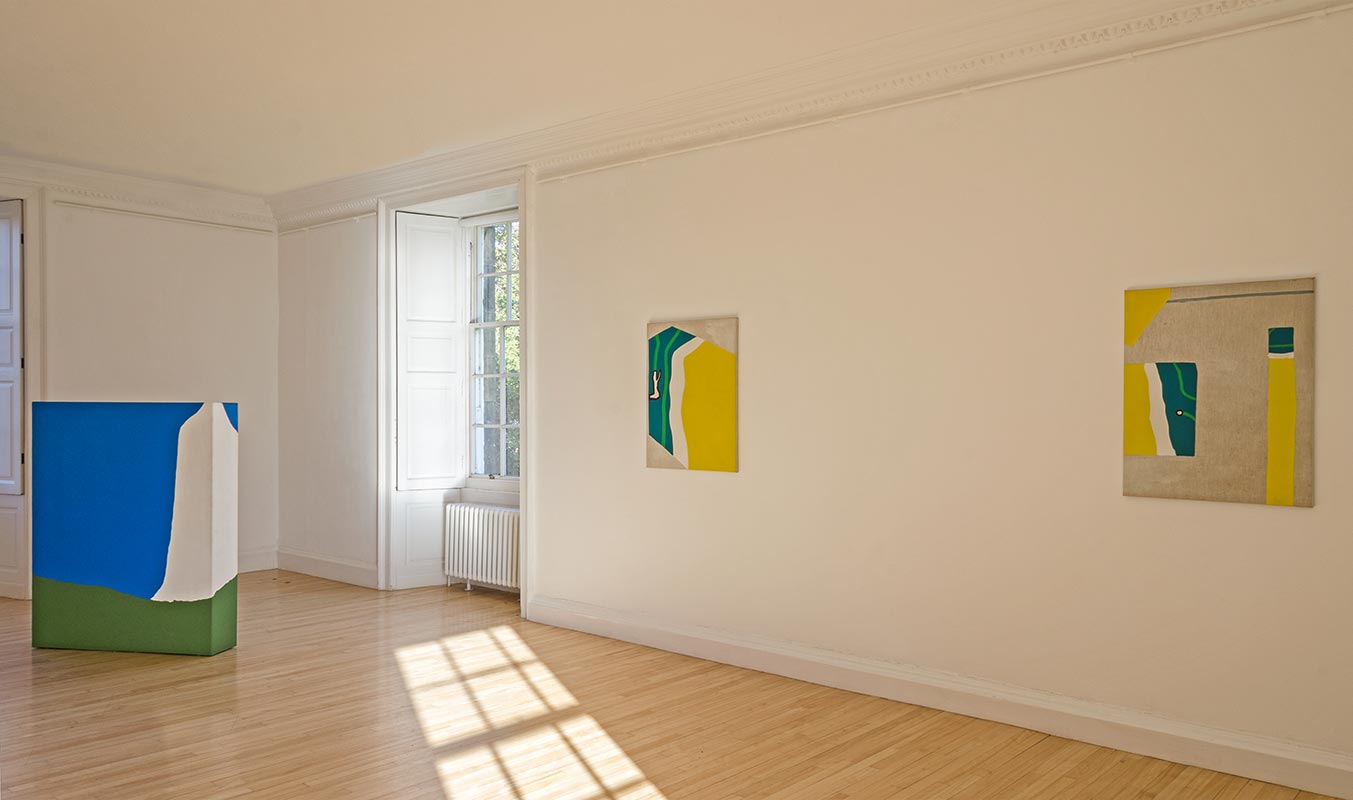
The beautifully curated exhibition at Inverleith House in Edinburgh presents 43 of his paintings from 1967 up until his death in 2012. It is the artist’s first major solo exhibition in the UK since the Whitechapel Gallery’s retrospective in 2004, and his first posthumous one. Raoul De Keyser’s paintings resist easy assimilation; he asks us to look and then look again, persistently confounding our first impressions. The exhibition is cleverly installed in reverse chronological order, working backwards from the artist’s autumnal later works towards to his earlier Pop-inflected paintings seen upstairs.
In the later paintings ambiguous shapes often float in space, suggesting clouds or islands. De Keyser’s great talent is to keep oppositional ideas in the balance: forms can simultaneously suggest geological or domestic motifs. De Keyser is fond of these productive misunderstandings. The paint is often applied as thin as cream and sometimes as thick as butter, yet always chalky and matte and retaining the quality of a sketch. The surface is worked on and through, revisited and revised.
Exhibition View, ‘Raoul De Keyser: Paintings 1967 to 2012’, at Inverleith House, Royal Botanic Garden Edinburgh. Courtesy of private collection, Zeno X Gallery, Antwerp, and David Zwirner, New York/London.
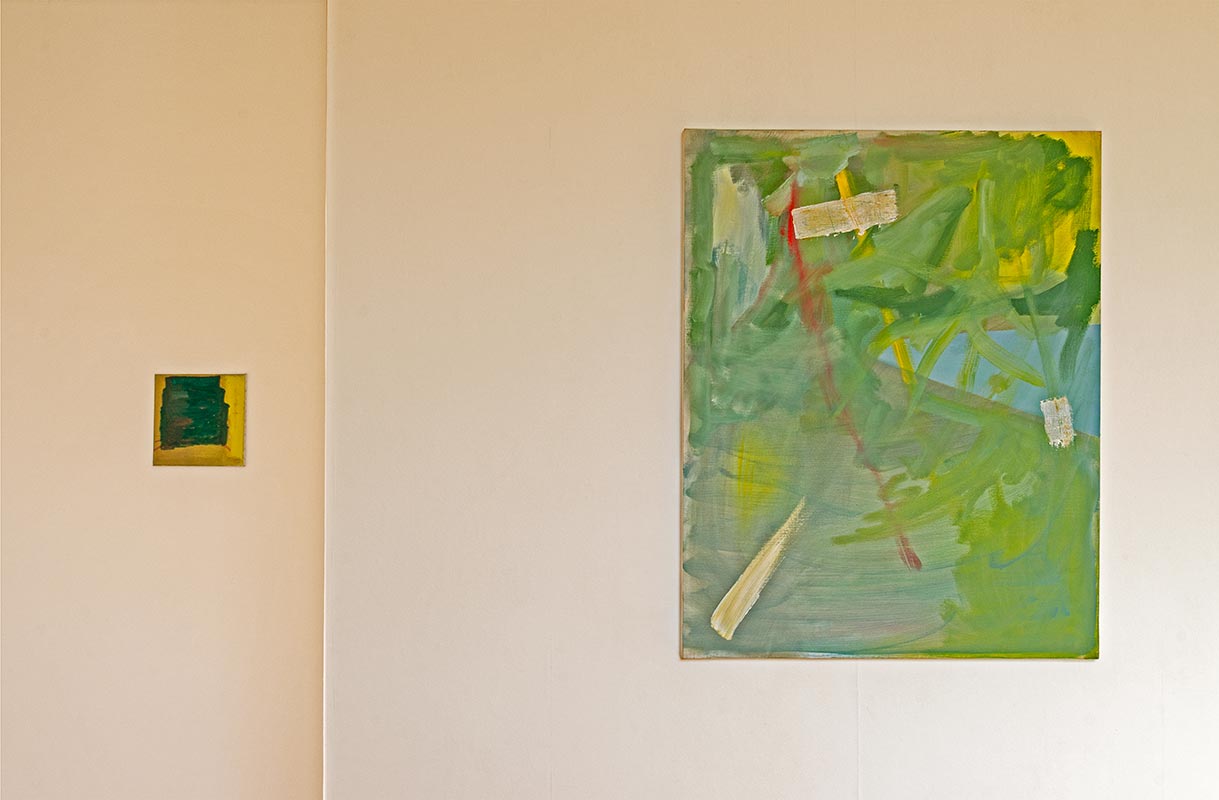
The first painting that the visitor encounters, and the most anomalous, is Dal (1992) which consists of flecked and smudged red paint on a white canvas. The resultant image looks incidental, with the composition jettisoned in favour of chance. Here, painting is reduced to an elemental act, and through extreme economy, De Keyser reminds us of the fundamental urge to mark a surface.
Camping V (Sixth Linen Box) (1971), seen upstairs, is typical of the earlier work. The solid areas of ultramarine blue, cobalt green and titanium white conflate Pop with Minimalist sensibilities. Seen from a certain point, the blocks of colour coalesce into a recognisable image of a tent. The painting is a witty double entendre and, like those of painters such as Mary Heilmann, the image is a vehicle for formal experimentation as well as narrative. The comparison to Heilmann is telling, and although both painters approach painting quite differently, they have both bought a new emotional tenor to abstraction. De Keyser’s influence can be seen in artists as diverse as Hayley Tompkins, Richard Aldrich, and Luc Tuymans. I couldn’t really imagine a better setting for De Keyer’s paintings then Inverleith House and urge you not to miss this exhibition.
‘Raoul De Keyser: Paintings 1967 to 2012’ is at Inverleith House, Edinburgh, until 12 April.
Related Articles
Edinburgh Art Festival: What Not To Miss (Maggie Gray)

